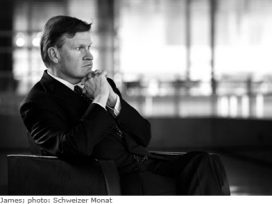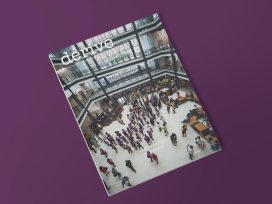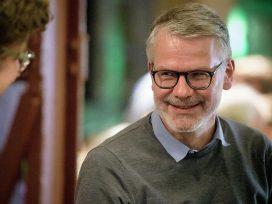In April 2010, we formed ourselves into an independent and interdisciplinary work group to carry out a research project on nightlife in Geneva, commissioned by the Cultural Department of our city, entitled Journey to the End of the Night. Our group included, among others, several geographers and urban engineers, a sociologist, an ethnographer and a psychologist. For the most part, we didn’t know each other prior to the research project. But we gradually came together, in different ways, in questioning the same topic: nightlife. Through a totally self-managed and very collective way of working, outside the confines of any academic structure, we produced 150 pages of maps showing night venues, statistics and analysis of nightlife in Geneva, a report that is now a reference for local decision-makers. We rapidly realised the subject was wider than we had first thought. The question has become a very interesting starting point for reviewing general everyday urban problematics. No research of this sort had previously been carried out in this town: the only example that we had was Urban Nightscapes: Youth Cultures, Pleasure Spaces and Corporate Power, by Paul Chatterton and Robert Hollands. The whole process questioned our role as researchers involved at a decision-making/action level.
The research started with a first phase of photography of nightlife during summer. It includes historical and spatial elements which together make up the actual nightscape of our city (especially the fading out of squat culture in Geneva), a complete mapping of night venues following a precise typology inspired by Chatterton and Holland’s book, a large satisfaction survey (around 1000 night owls – consumers – were questioned) and a large part dedicated to semi-directive interviews with night professionals (producers) and decision-makers (regulators). This led to a second phase in winter. As a logical consequence, the city of Geneva commissioned us to organise the Etats Généraux de la Nuit, a week-long conference on nightlife and night culture which took place from 1 to 5 March 2010. During this week, six lecturers from Geneva and all over Europe came to speak about their practical experiences and theoretical research on nightlife. Each talk was contextualised by a panel of 22 invited, local specialists: nightlife professionals, cops, politicians, artists, associative representatives and a technical specialist.
Where did we start from and after a year what can we say of our experience? Where are we going now as researchers and, above all, as citizens?
First, we had to take a step back with regard to our practices, tastes and habits in terms of nightlife, as we were all already part of the nightlife scene as consumers, producers, music lovers and activists. We also had to face much more than “just” the undertaking of a research project. As we realised that the subject is very emotional and catalyses various polemic urban issues that we will develop in this paper. We were also faced with surprising technical difficulties: investigating night practices in a club with a foam party for example. One has to imagine how difficult it gets talking with night owls after 2 am, due to their consumption habits of course, and also because of the thundering noise inside the nightclubs. We also learned that academic discourse is not necessarily what politicians expect. We were pressurised time-wise to give results. We had to learn rapidly the political game, and how to position ourselves in this game and keep our integrity as researchers. Despite all these difficulties, we realise that most nightlife issues are not specific to night-time, but are also present during the day, as we shall discuss further; they are, however, heavily imbued with a sense of the historical role of nightlife in society, its collective mythology and a specific social dynamic, which is as creative as it is under-recognised.
The object of this paper is not to tell a finished story but to present a picture of a moment in a process. We finished the research, gave it to the authorities and organised an event. Now it is time to take stock of our reflections and experiences and consider the future.
Geneva’s nightlife during the 1980s and ’90s
In Geneva in the 1980s, a squat movement started to occupy empty buildings. At first, the squats organised themselves to coordinate their discourse essentially with the political objective of criticizing real-estate speculation. Each squat played a different social role and was a part of the alternative cultural scene. Squats had bars and hosted concerts and parties, but some were also involved in daytime activities with restaurants, libraries or even a day-care centre. They were part of the identity of the city, in which a good part of the population recognised itself. They allowed people with very little means to party in a city, which had formerly been known mainly for its money and luxury. They were the visible symbol of the discontent of those who could not afford that lifestyle. They were also a way of inviting and discovering groups or artists outside of the mainstream distribution system. This led to a polarization of night culture: alternative vs. expensive.
By the end of the 1990s, the situation had changed, first with a newly elected city prosecutor from the rightwing, Daniel Zappelli, who promised to close down all the squats that were housing “petty criminals”, “drug addicts” and were contributing to the deterioration of Geneva. He stayed in office long enough to close most of them. Even though important demonstrations took place, and clear and loud voices against the evictions could be heard, even from some local politicians, squats are today a memory. At this point, the Cultural Department did of course not have the authority to prevent the evictions. But the department also failed to take a public stance to defend or openly deplore the disappearance of a certain kind of culture. It is difficult to gauge the level of awareness of the cultural authorities at the time.
The strong demographic growth contributed to heighten the tension. Moreover, the arrival of major multinational companies with large workforces and new jobs created stress on real-estate service capacities. Gradually, over a decade, squats were closed down, some quite brutally, with spectacular evictions. Each eviction meant the progressive choking of alternative culture. These places housed artists and groups and hosted parties that could not have existed in a profit-making, real-estate environment. Squats allowed creativity and diversity to flourish in a way that was irreplaceable or non-existent elsewhere. They were open to all, and did not practice selection at entry.
A new image of cultural nightlife
Another major change happened in 1997 with the abolition of the “clause du besoin”, a law that till then had limited the number of night-time venues in the city. This legislative change allowed the booming of new night venues. We realised through diverse data (interviews and surveys) that the public of Geneva tends to complain massively about the lack of things going on at night and about the small number of places to go to. However, when mapping the venues, it appeared that there have never been so many of them in the recent history of the city, which means that there is a huge gap between perceptions people have and reality. This discrepancy reveals that the problem is not a lack of venues per se but rather a lack of choice, diversity, creativity and accessibility. Most venues host the same type of activity, thus overlooking a whole different aspect of the night scene.
Overall, the closing of squats and the moving of alternative culture literally to underground places (except for one or two well-known, publicly funded institutions), and the change of law, gave cultural nightlife in Geneva a whole new image.
During the Etats Généraux de la Nuit, many topics directly linked with urban issues were explored: rent price policies; conflicts between users of urban space (such as noise problems and neighbourhood issues); public transport and safety policies; cultural planning (which is totally absent in Geneva’s cultural policies); night culture’s very poor public image; even the non-recognition of night culture as a real form of culture and, as a consequence, the under-recognition of its role in promoting and diffusing culture, professionalizing cultural workers and providing them with an economic base, and its important role in the cultural education of a generally young public.
The effects of the study
Linking these subjects to our questioning about nightlife meant lending academic substance to night culture, and it probably contributed to revealing the seriousness of the subject. For us as researchers as well as for the public, it had much more unexpected collateral effects. First of all, nightlife and night culture are powerful tools for understanding urban issues. During the debate on public nuisance, we were present at an interesting discussion between complaining residents, young night owls and local authorities. They had an opportunity to challenge each other’s different views on the use of urban public space as well as each other’s fears, prejudices and perspectives for solutions. It was important to insist on this dimension as nightlife theoretically and concretely started acting as a catalyst for discussing the city. It also meant both including youth concerns in the public debate and raising awareness among young night owls about political issues.
Other aspects of these “after-effects” have to be mentioned. First, after presenting our report to the local and international press, and considering the response that our work had, we were asked to present it at the weekly meeting of the five Town Councillors (including the Mayor). Moreover many political figures were also present at the Etats Généraux de la Nuit‘s lectures. There is no doubt that the event was a great opportunity to canvass and to get in touch with young voters. But there is also no doubt that it gave us and the public direct and privileged access to the political world and provided us with acknowledgement as recognised spokespersons. A positive reading of this experience is that the Etats Généraux de la Nuit‘s process contributed to highlighting nightlife issues as important in the local political debate.
On the other hand, an analysis has to be made of the subsequent misunderstandings in the political discourse on nightlife. For years, there has often been a political figure involved in squat occupations, acting perhaps for the sake of public image or out of personal conviction. In Geneva, political personalities such as Rémy Pagany from the “A Gauche toute!” party (literally “Let’s go Left!”) are very consistent in this practice. As a matter of fact, the championing of youth culture by politicians is not new.
Another local significant example is Michel Chevrolet, candidate for PDC (Christian Democratic Party), who has even worked as a Public Relations Manager for the MOA club. There are two major clubs located in the Genevan suburb of Vernier, more precisely in its industrial zone: the MOA club and Halle W. They have in common their location and their private profit-making economic structure. In Geneva, land-zoning regulations do not normally allow any activities other than industry to settle in such areas. Despite their long-term existence (17 and 8 years), both clubs were temporarily closed in September 2010, officially for security reasons. The canton of Geneva’s Interior State Councillor Michèle Künzler, retrieved their operating licence after their denunciation by the extreme rightwing party MCG (Movement of Genevian Citizens) for violating the law. As the public figure positioning himself against the club’s closing, Michel Chevrolet gained much visibility and increased his popularity.
The Usine is the latest public alternative night venue to open weekly in Geneva. It is not a squat, since it is housed in a building belonging to the city benefiting from a four-yearly subsidy. After MOA and Halle W closed, the Usine experienced its biggest crisis in 20 years: more than 2000 people could not be admitted inside due to overcrowding during the first weekend. Protests started, organised at first by MOA Club supporters on 9 October 2010. On 22 October, as a result of an invitation on Facebook, 2000 people occupied the Plaine de Plainpalais, the marketplace in the centre of the city, for an improvised late night party with the aim of demanding more night venues. On 23 October and for two consecutive weekends subsequently, the Usine announced its “night strike” and invited its public to party in the streets. MOA reopened on 5 November and Halle W one week later.
A rhetorical turnaround
What conclusions can be drawn from this singular situation? First, our research benefited from an unexpected timeframe. Following the delivery of the first part of the report in mid-September, the second part, as well as the Etats Généraux de la Nuit, suddenly became a priority for the Cultural Department. Thanks to coincidence, we became a small element in a real inversion of the balance of power in the context of local elections. Of course today one can see an upsurge of recognition of nightlife issues in political discourse.
Working on a pertinent research subject in the context of massive public involvement is exceptional. But it also necessary to read between the lines. MOA supporters initiated protests by supporting a “mainstream” club. That kind of club had never been involved in the cultural struggle in the way alternative places had been. Alternative structures through the UECA (Union of Autonomous Cultural Spaces) did express “regret” at the closure of MOA, but they didn’t openly stand together with the MOA supporters.
We observed a rhetorical circulation: the authorities, who until then had never defended night culture, started declaring themselves as protectors of a club that was a commercial structure. This club engaged in practices (discourse, demonstrations, public spaces occupation) usually the preserve of alternative cultural actors. The alternatives on their side benefited from this general situation, as it acted as a reminder that nightlife also has a cultural activist dimension. In general, this situation raised political awareness of the importance of night culture through the expression of these tensions.
The official nature of a research project financed by the Cultural Department, the similarity of the results obtained in summer and winter, the interdisciplinary nature of the working team, and the local actuality, were reasons for the authorities, nightlife producers and associations to lend our team and the whole subject an attentive ear. We realised that it was time to move on, and get involved in jointly reconstructing thinking structures.
During our week of debates, we had the opportunity to hear about the night mayor position in Amsterdam. We heard of all the problems that could be solved by appointing such a person in the city, who acts as a mediator in many different kinds of tensions: between neighbours and night venues; between night venues and the police or the political authorities. The night mayor also helps to find solutions when faced with the reality of commercial real estate versus the needs of alternative culture (which by definition suffer from a lack of means).
State council of the night
However the Amsterdam example could not be applied, as it was, to Geneva. Geneva is a city-state, which means that the city council is not the only presiding authority; there is also a state authority. In this case, the mayor is in fact the authority for the city only and not the whole canton. We then thought to follow Amsterdam’s example of bypassing the authority in charge, but in our case that would mean going to the state authority and setting up a “State Council of the Night”. This is closer to the Swiss system of having a group of people rather than only one person in charge. From this moment, our work stopped being financed by public money. We have now returned to our activist activity, which is what really legitimates this council. The Night Council will bring together representatives of different types of nightlife venues: bars, cabarets, nightclubs, alternative culture, and events without venues (festivals, independent producers). Its first job will be to address the problems that were identified in Journey to the End of the Night, and work as mediator, solution facilitator and representative of the night-time venues.
As the research pointed out, the problems in Geneva are, for the most part, common to all types of venues. The type of activity, music or public doesn’t change the everyday difficulties that they face: administrative difficulties, neighbourhood relations, rent expenses, etc. Not only do they represent some difficulties that also occur in daytime, but they are also a crystallisation of the different tensions that have been building up over the last three decades.
When we contacted the owners, producers or tenants of the different places, at first during our research with the night owls and also in a second round of interviews with different nightlife actors, we were pleasantly surprised to find them very open to our approach. When, recently, we contacted the overseeing body of the different types of places to ask them to be part of the “State Council of the Night”, we were again welcomed very enthusiastically. This clearly shows that people are aware of the level of tension and general difficulties existing in Geneva today and want a resolution. It seems that this new entity that is being created is greatly needed and will have a lot to work on.
Our research revealed how much the Genevan public’s opinion has been coloured by certain aspects of night venues during the squat period, which offered accessibility to all, low prices and a culture beyond the bounds of the mainstream. The disappearance of squats put the last alternative places, or people who offer alternative culture, in a tense relation with the state. In the context of Geneva, as a commercial structure, it is not possible today to offer accessible prices or cultural content. The perspective that we propose with the “State Council of the Night” is one amongst many. However, all the nightlife venues tend to try to resolve the problems they face on their own. Experience has shown that this is not enough; inventing a collective structure may be a road to new solutions. By our approach, we also want to depolarise the scene in Geneva and concentrate the debate on larger scale reflection. Each type of place has its own content and history but the public is very mobile; in this sense the issues are common.
It is also time to give nightlife its due place: it is an important part of the life in a city, certainly as important as daytime activities. People work at night, socialise, have a cultural life, and have fun. Most of the population at some point is a night owl of some kind.
The new and unpredictable involvement of the state in this dimension will open new possibilities but will also bring with it a new set of limitations. For now, it is interesting to watch nightlife becoming recognised as a full dimension of life in society, as illustrated by its inclusion in the urban planning the state is currently working on for a new quarter of Geneva. There are already many different things at stake and underground battles for priority going on.
The title “Reclaim the
city! Reclaim nightlife!” is a direct reference to Paul Chatterton’s
lecture at the Electron Festival in Geneva in 2010; see www.electronfestival.ch/2010/expos-perfos-conferences?ditto_gd_documents=144. The report Journey to the End of the Night is available (in French) and as open source on www.etatsgenerauxdelanuit.ch. For further information see: www.arv-ge.ch and www.raisonsociale.ch





